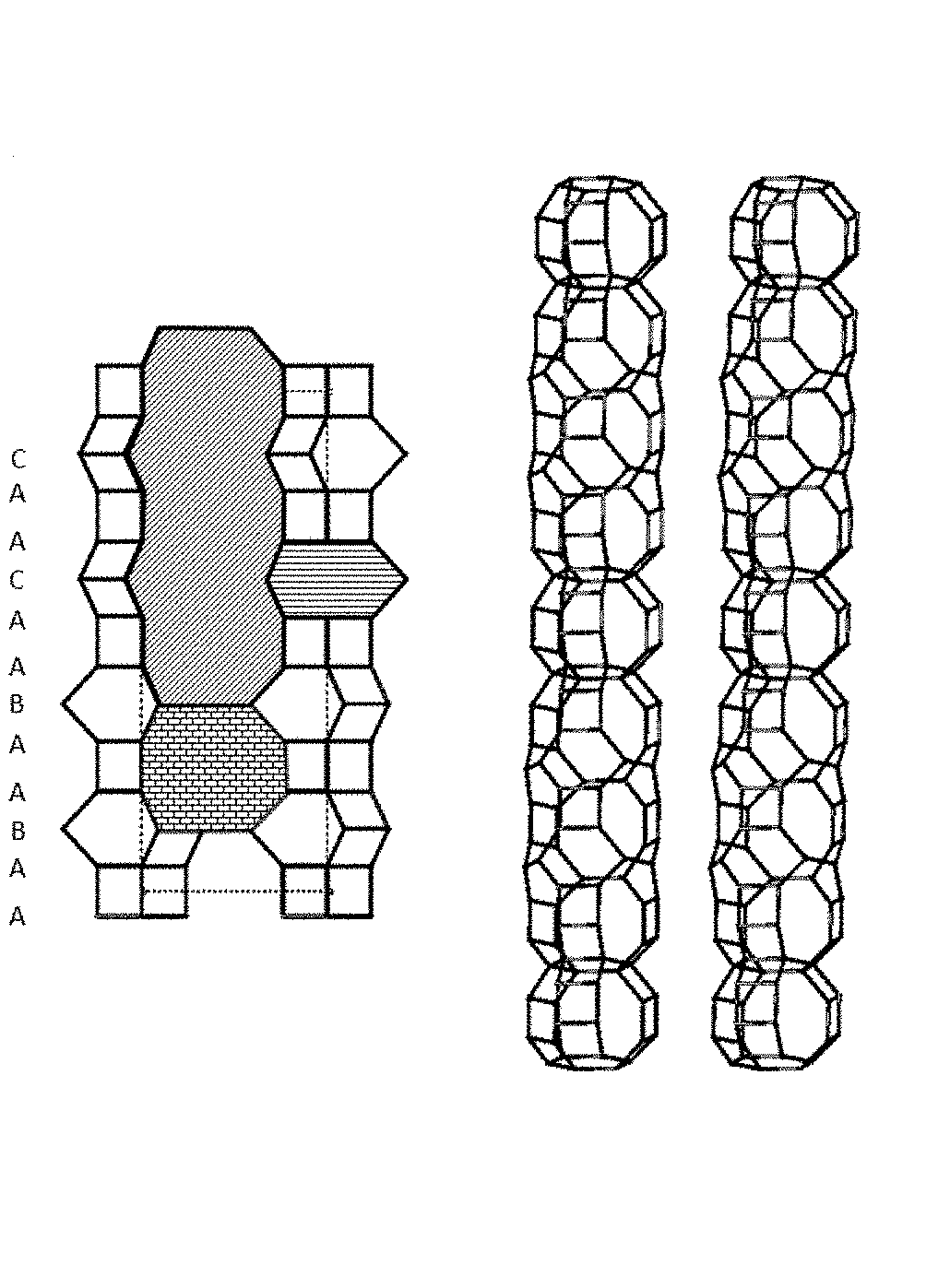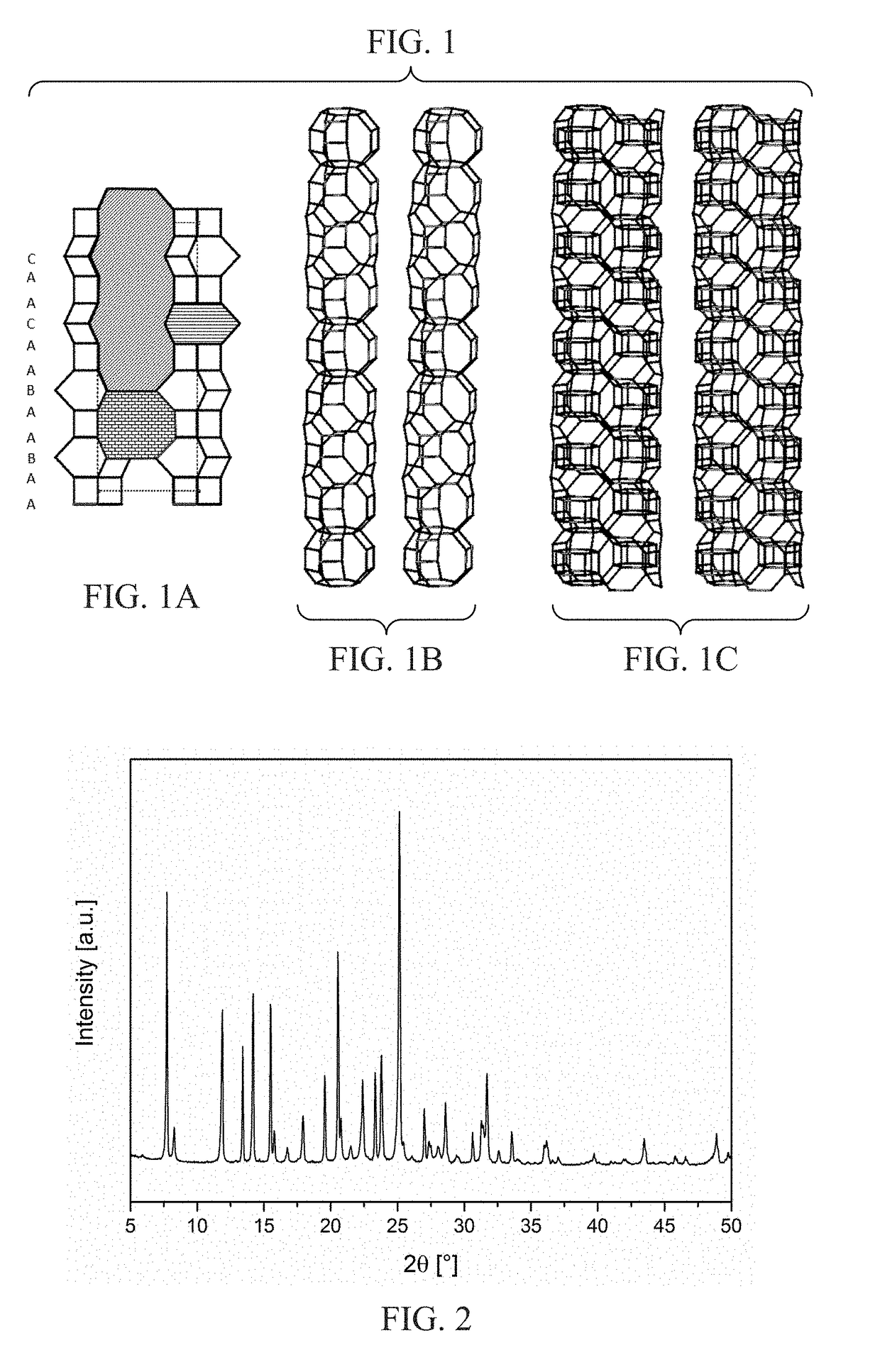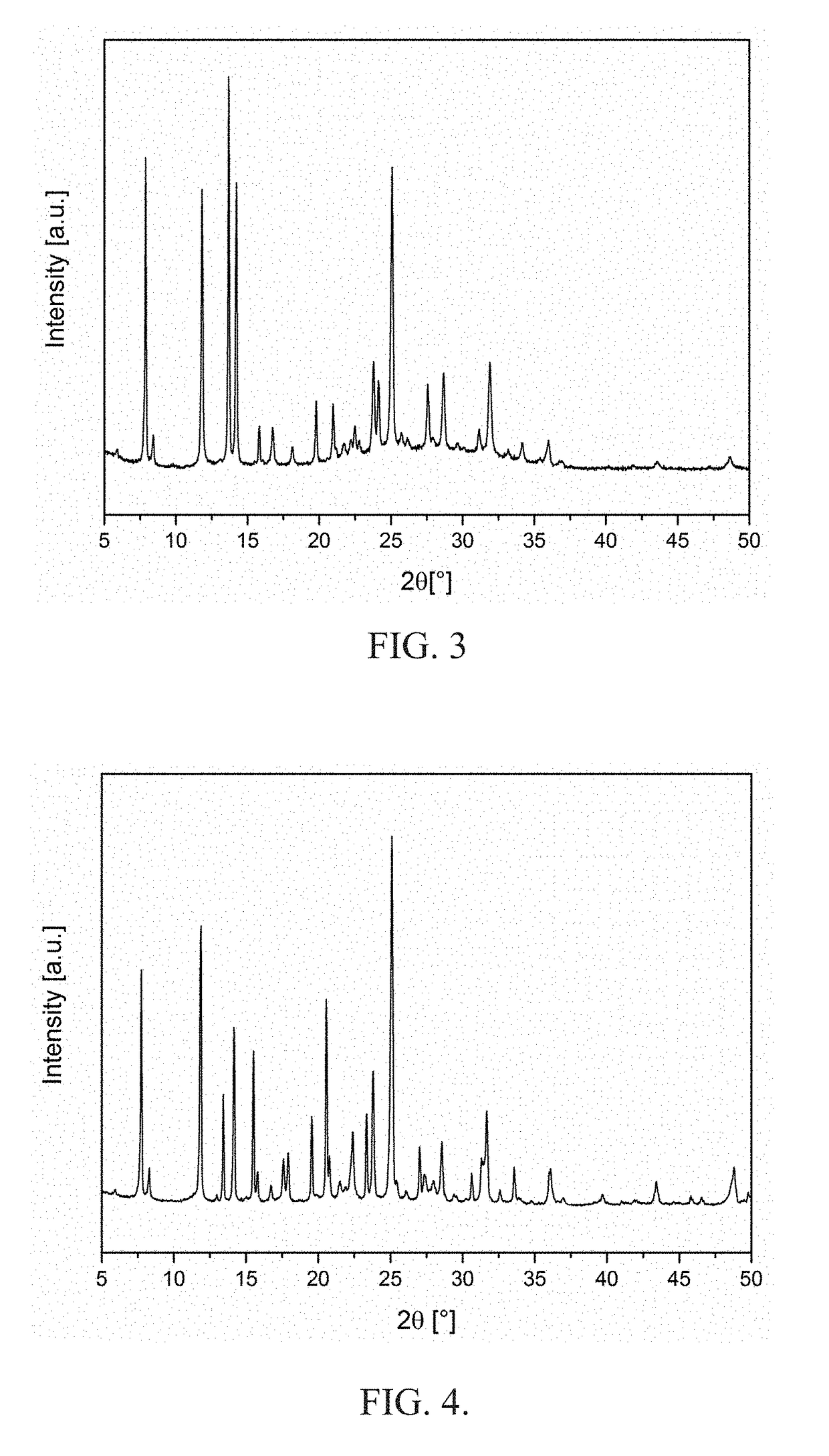Sta-20, a novel molecular sieve framework type, methods of preparation and use
a molecular sieve and framework technology, applied in the field ofsta20, can solve problems such as whole or partial degradation
- Summary
- Abstract
- Description
- Claims
- Application Information
AI Technical Summary
Benefits of technology
Problems solved by technology
Method used
Image
Examples
example 1
Synthesis of SAPO STA-20 Type
[0196]A reaction gel having a molar composition of:
0.10 SiO2: 1 Al(OH)3: 0.90 H3PO4: 40 H2O: 0.10 DiDABCO-C6: 0.42 Trimethylamine: 0.08 Tetrabutylammonium Hydroxide, with 2% SAPO-AFX (seed)
was prepared in 125 ml pressure vessels. The reagents used and order of addition was:[0197]a) The required amount of phosphoric acid (H3PO4 85wt %, Alfa Chemicals) was weighed into a 100 ml container.[0198]b) The required amount of fumed silica (Cabosil) and water were added to the phosphoric acid and stirred.[0199]c) The required amount of aluminium hydroxide (Al(OH)3, Alfa Aesar) was added to the above mixture.[0200]d) After stirring for 10 minutes, 1,1′-(1,6-Hexanediyl)bis(4-aza-1-azoniabicyclo[2.2.2]octane) dibromide, (Alfa Chemicals) was added.[0201]e) Trimethylamine (Alfa Chemicals, 85 wt %) was added over the above solution and the mixture was stirred for 10 minutes.[0202]f) Tetrabutylammonium hydroxide (55 wt %, Sachem) was then added to the mixture.[0203]g) 2 ...
example 2
Activation of SAPO STA-20 (Removal of the Templates)
[0206]The as-made (template containing) material of Example 1 was activated by calcination in air. The material was heated to 110° C. at 2° C. / min and held at 110° C. for 10 hours, then heated to 450° C. at 5° C. / min and held at 450° C. for 16 hours. The material was then heated to 550° C. at 5° C. / min and held at 550° C. for 16 hours.
[0207]The powder XRD pattern is shown in FIG. 3 and comprises the diffraction peaks in Table 5. Analysis by powder XRD indicated that the product was phase pure STA-20.
TABLE 5d-spacing2θRel. Int.d-spacing2θRel. Int.[Å][°](a)[%][Å][°](a)[%]11.227.9vs3.9522.5w10.538.4w3.7423.8m7.4811.8vs3.6924.1w6.4713.7vs3.5525.1vs6.2314.2vs3.2327.6w5.6015.8w3.1128.7w5.2916.7w2.8731.2w4.4819.8w2.8031.9m4.2321.0w2.5036.0w(a)±0.2
example 3
Synthesis of SAPO STA-20 Type
[0208]A reaction gel having a molar composition of:
0.20 SiO2: 1 Al(OH)3: 0.80 H3PO4: 40 H2O: 0.10 DiDABCO-C6: 0.42 Trimethylamine: 0.08 Tetrabutylammonium Hydroxide, with 2% SAPO-AFX (seed)
was prepared in 125 ml pressure vessels following the same procedure described in Example 1.
[0209]The XRD of the dried product is shown in FIG. 4.
PUM
| Property | Measurement | Unit |
|---|---|---|
| Time | aaaaa | aaaaa |
| Time | aaaaa | aaaaa |
| Time | aaaaa | aaaaa |
Abstract
Description
Claims
Application Information
 Login to View More
Login to View More - R&D
- Intellectual Property
- Life Sciences
- Materials
- Tech Scout
- Unparalleled Data Quality
- Higher Quality Content
- 60% Fewer Hallucinations
Browse by: Latest US Patents, China's latest patents, Technical Efficacy Thesaurus, Application Domain, Technology Topic, Popular Technical Reports.
© 2025 PatSnap. All rights reserved.Legal|Privacy policy|Modern Slavery Act Transparency Statement|Sitemap|About US| Contact US: help@patsnap.com



